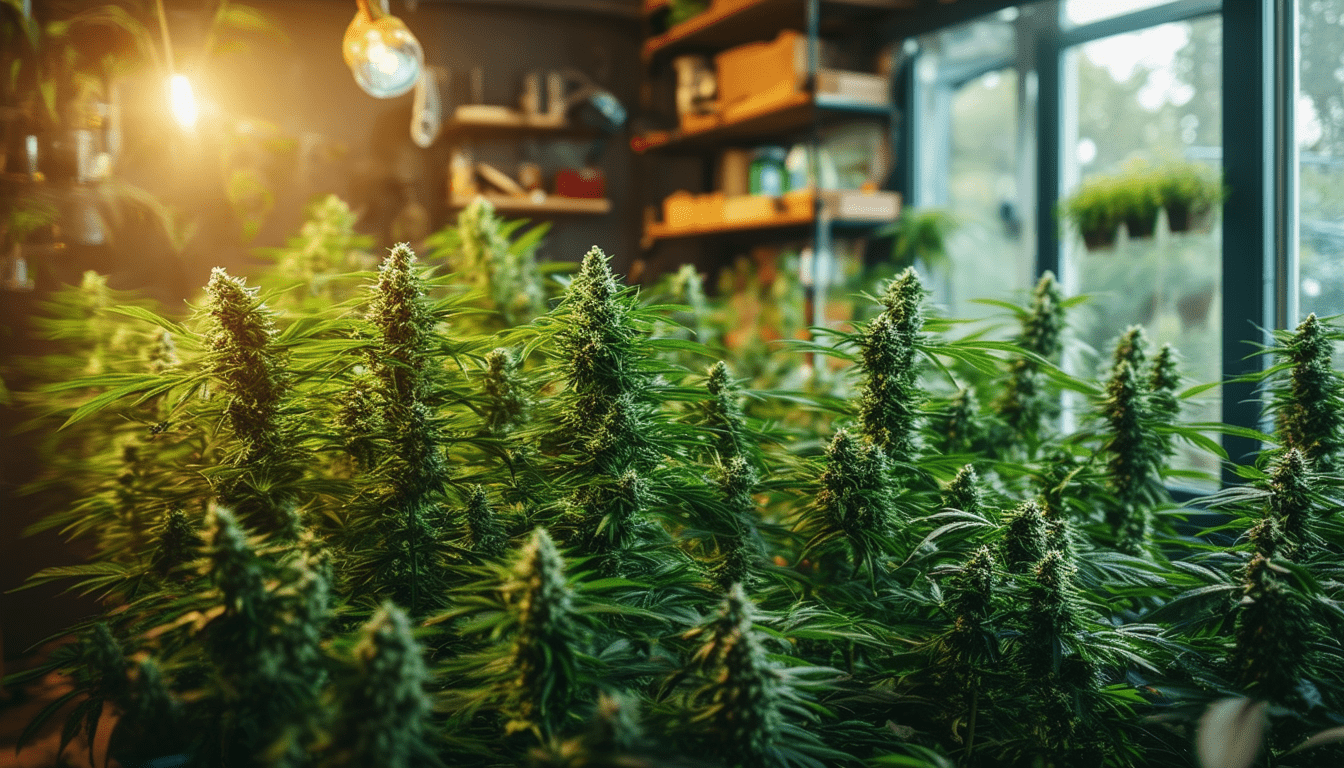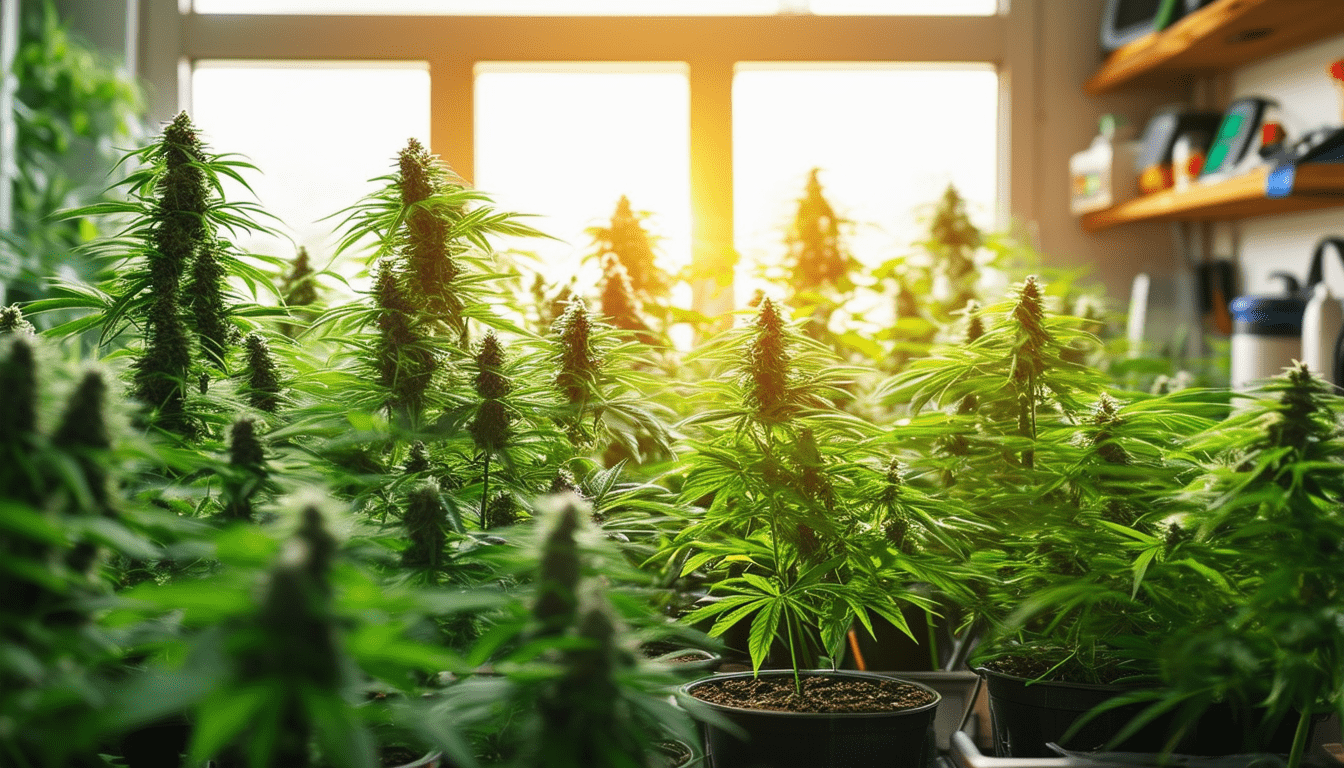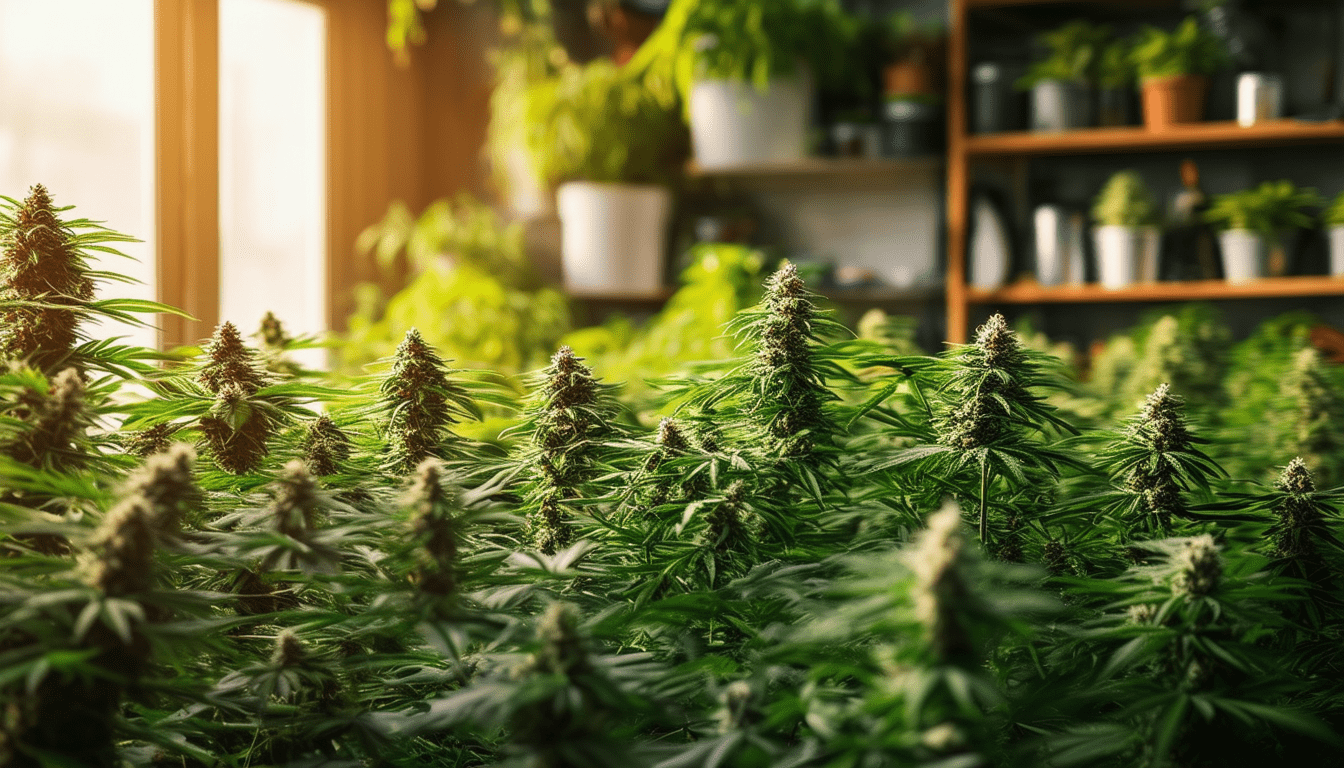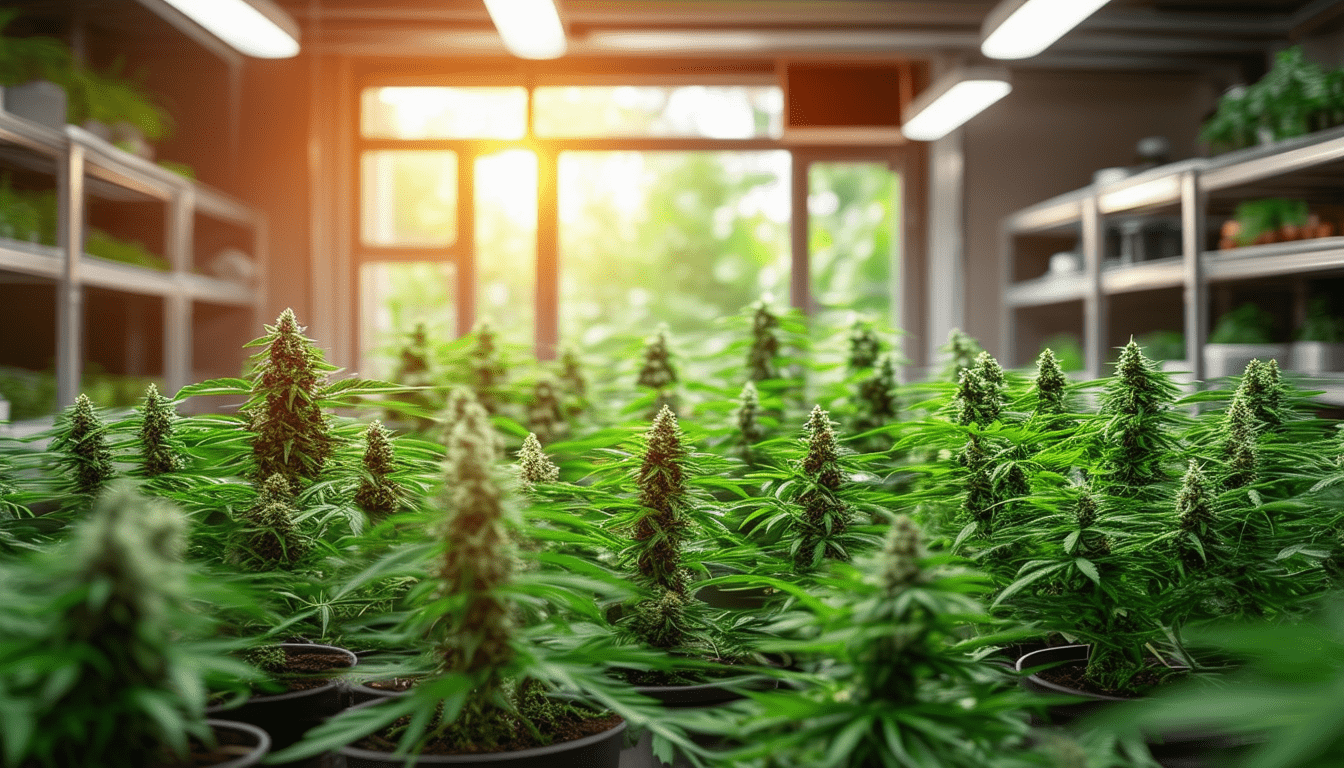An overview of cannabis cultivation techniques
|
IN BRIEF
|
In the evolving landscape of agriculture, cannabis cultivation has emerged as a significant sector, attracting both enthusiasts and professionals alike. This industry encompasses a variety of techniques tailored to optimize plant growth and improve yield quality. The primary methods of cultivation include indoor, outdoor, and greenhouse growing, each offering unique advantages and challenges. Additionally, growers can choose from approaches such as hydroponics, organic growing, or a hybrid approach, allowing for flexibility based on environmental conditions and desired outcomes. Understanding these diverse methods is crucial for anyone looking to delve into the world of cannabis, whether for personal use or commercial production.

Understanding the various cannabis cultivation techniques is essential for anyone looking to grow this versatile plant. With three primary methods—hydroponics, organic cultivation, and hybrid approaches—each offers distinct advantages and challenges. This article explores these methods in detail, highlighting their differences and providing insights into the best techniques to ensure a successful cannabis crop.
Hydroponics: Soil-less Growth
Hydroponics is a revolutionary method of growing cannabis without the use of soil. Instead, plants receive nutrients directly via a water-based solution, enhancing growth speed and yield. Among the hydroponic systems, Deep Water Culture (DWC) is one of the most popular because it allows roots to be submerged in nutrient-rich water, facilitating rapid absorption. Successful hydroponics requires careful monitoring of nutrient levels and pH to ensure optimal plant health. For more information on various hydroponic systems for cannabis, explore resources at Growcycle.
Organic Cultivation: Embracing Nature
The organic cultivation method focuses on growing cannabis using natural processes and materials. This includes utilizing organic fertilizers and pest control methods that promote environmental sustainability. Many enthusiasts argue that organic cannabis often has a richer flavor and aroma due to the absence of synthetic additives. Techniques such as composting and crop rotation also play significant roles in this method, fostering soil health over time. For those interested in exploring organic practices in the cannabis industry, SunMed Growers offers insightful discussions on various organic techniques.
Hybrid Approaches: The Best of Both Worlds
A hybrid approach to cannabis cultivation combines elements of both hydroponics and organic growing. This method allows cultivators to take advantage of the rapid growth potential of hydroponics while still maintaining organic practices. By integrating synthetic nutrients at certain growth stages with organic soil amendments, growers can yield crops that are both potent and flavorful. Hybrid cultivation can also include varied environments, like using controlled indoor habitats supplemented by outdoor sunlight.
Indoor vs. Outdoor Cultivation
When it comes to cannabis cultivation, the choice between indoor and outdoor growing significantly affects the plants’ development. Indoor cultivation offers the ability to control lighting, temperature, and humidity levels, leading to consistent results throughout the year regardless of seasonal changes. However, outdoor cultivation harnesses natural sunlight and can yield larger quantities, subsequently reducing operational costs. Both methods have unique benefits; understanding these can help growers select the optimal environment for their needs.
Processing and Cultivation Facilities
Once harvested, cannabis must be processed carefully to preserve its quality. Cannabis cultivation and processing facilities play a crucial role in this phase, involving drying, curing, and potentially extracting cannabinoids for various products. Facilities must adhere to specific regulations which often vary by state, ensuring the cannabis produced maintains high standards of quality and safety. More detailed insights on compliance and regulations can be found at Vermont’s Department of Environmental Conservation.
The Stages of Cannabis Growth
The journey of cannabis cultivation is marked by distinct stages, each requiring specific attention and care. Understanding the six stages of growth—from seed germination to flowering—is vital for any grower. During these stages, cultivators must provide suitable conditions, such as adequate light cycles and nutrient ratios, tailored to the plant’s needs. Essential guidance regarding the growth process can further enrich a grower’s experience.
In summary, grasping the various cannabis cultivation techniques is essential for optimizing yield and quality. Whether choosing hydroponics, organic methods, or a hybrid approach, each pathway comes with unique aspects to consider. The right choice ultimately depends on individual goals, resources, and environmental factors. Explore these techniques to elevate your cannabis cultivation journey.
Comparison of Cannabis Cultivation Techniques
| Technique | Description |
| Indoor Growing | Utilizes controlled environments with artificial lighting to optimize growth; ideal for year-round cultivation. |
| Outdoor Growing | Relies on natural sunlight and environmental conditions; tends to produce larger plants with a robust flavor. |
| Greenhouse Cultivation | Combines both indoor and outdoor processes, allowing for better climate control while utilizing sunlight. |
| Hydroponics | Growing cannabis without soil using nutrient-rich water solutions for faster growth and higher yields. |
| Organic Cultivation | Employs natural methods and inputs, focusing on soil health and sustainability for pure and potent buds. |
| Hybrid Approaches | Mixes elements of various techniques to balance convenience and quality; adaptable to grower preferences. |

Cannabis cultivation encompasses a variety of techniques and methods, each influencing the final quality and yield of the plant. Understanding these different cultivation techniques is crucial for growers looking to optimize their operations, whether they’re cultivating for personal use or commercial purposes. This article will explore the primary methods of cannabis cultivation, examining the benefits and challenges associated with each approach.
Commercial Cultivation Processes
There are several primary processes in cannabis cultivation: hydroponics, organics, and hybrid approaches. Hydroponics involves growing cannabis without soil, utilizing nutrient-rich water instead. This method can yield faster growth rates and higher productivity. On the other hand, organic cultivation relies on soil and natural amendments, promoting sustainability and richer flavor profiles in the final product. Hybrid approaches combine elements from both systems, allowing for greater flexibility in cultivation practices.
Best Cannabis Cultivation Techniques
Employing effective techniques is essential for ensuring premium yields and maintaining consistent quality. Some of the best cultivation techniques include regular monitoring of environmental factors, employing advanced nutrient delivery systems, and implementing pest management strategies. By incorporating these practices, growers can significantly enhance their output while minimizing potential issues.
Advanced Cannabis Growing Techniques
As cannabis cultivation evolves, so too do the methods used by growers. Advanced techniques, such as aeroponics and vertical farming, are gaining popularity. Aeroponics offers a soilless growing environment where roots are suspended in air and misted with nutrients, promoting rapid growth. Vertical farming allows cultivators to maximize space, making it ideal for urban environments. Understanding and adopting these innovative techniques can elevate the quality of cannabis products.
Indoor, Outdoor, and Greenhouse Growing
In cannabis cultivation, three primary settings are used: indoor, outdoor, and greenhouse. Indoor cultivation allows for complete control over environmental conditions, often resulting in higher quality buds. Conversely, outdoor growing utilizes natural sunlight and can present lower operational costs, but yields may vary due to weather conditions. Greenhouse growing offers a compromise, providing protection from elements while allowing natural light to penetrate, making it an increasingly popular choice.
The Stages of Cannabis Growth
Understanding the six stages of cannabis growth is vital for growers to manage their plants effectively. From selecting seeds to determining plant sex and providing optimal air quality, each stage requires careful attention. Growers must adapt their techniques according to the plant’s needs at each phase to ensure a successful harvest.
Resources for Cannabis Cultivation
For further information on cannabis cultivation techniques, resources like SunMed Growers provide comprehensive guides and practical advice. Additionally, Scientific Literature offers valuable insights into the latest research and findings in the field.
Legal Considerations in Cannabis Cultivation
As the legal landscape surrounding cannabis shifts, it’s essential for cultivators to stay informed about regulations. Resources such as California’s Department of Cannabis Control outline the licensing requirements and guidelines necessary for legal cultivation. Staying updated on laws, especially during regulatory changes, ensures a smooth operation and compliance.
- Indoor Cultivation: Controlled environments maximizing yield and quality.
- Outdoor Growing: Utilizing natural sunlight and space for larger crops.
- Greenhouse Cultivation: Hybrid approach combining outdoor benefits with indoor control.
- Hydroponics: Soil-less growing method promoting faster growth rates.
- Organic Cultivation: Using natural substances for a more eco-friendly yield.
- Vertical Farming: Space-saving technique allowing multiple layers of plants.
- Soilless Culture: Alternative mediums like coco coir and perlite for growth.
- Feminized Seeds: Technology ensuring female plants for optimal bud production.

Cannabis cultivation is a scientific discipline that involves a variety of methods and practices to achieve optimal plant growth and productive yields. Understanding the various cannabis cultivation techniques can help growers select the best method that suits their needs, whether they are pursuing commercial production or personal use. This overview will examine several prominent techniques, exploring their advantages and challenges, thus aiding both novice and experienced growers in making informed decisions.
Soil Cultivation
One of the most traditional methods of cannabis cultivation is soil cultivation. This method requires the use of nutrient-rich soil to grow the plants. Soilless mediums or organic compost can enhance growth rates and nutrient uptake. Soil cultivation allows growers to utilize natural resources and maintain a sustainable growing method, making it appealing for those interested in organic practices.
The key to successful soil cultivation lies in selecting the right soil mix, which should retain moisture while providing good drainage. This method also promotes beneficial microorganisms that improve plant health. However, managing pests and diseases can be challenging, necessitating regular monitoring and possibly the use of organic pesticides to prevent infestations.
Hydroponics
Hydroponics presents a modern approach to cannabis cultivation that omits the use of soil entirely. Instead, plants grow in a water-based, nutrient-rich solution. This method accelerates growth rates and enables precise control over nutrient delivery, which can result in higher yields compared to traditional methods.
While hydroponic systems can be set up indoors or outdoors, they require careful management of pH and nutrient levels. This advanced technique demands a higher level of skill and initial investment, making it more suitable for experienced growers. Despite these challenges, hydroponics remains a preferred choice for those aiming for premium quality and efficiency.
Greenhouse Cultivation
Greenhouse cultivation combines the benefits of both indoor and outdoor growing. This method allows growers to leverage natural sunlight while providing some control over environmental conditions such as temperature and humidity. Greenhouses can be outfitted with various systems for ventilation and irrigation to optimize plant health.
This technique is particularly advantageous for cultivating cannabis in regions with extreme weather conditions, as the greenhouse protects plants from harsh elements while maintaining a stable growing environment. However, greenhouse cultivation does require considerable investment in structure and equipment, making it less accessible for small-scale or beginner growers.
Indoor Growing
Growing cannabis indoors has gained immense popularity due to its ability to provide complete control over the growing environment. Indoor setups can utilize artificial light, allowing growers to cultivate cannabis year-round regardless of external weather conditions.
While indoor growing allows for the highest level of customization regarding light, temperature, humidity, and CO2 levels, it comes with a higher operational cost. The setup requires significant investment in lighting, ventilation, and equipment, which can be daunting for beginners. Nonetheless, for those willing to invest, indoor growing can yield results that compensate for these costs.
Organic and Sustainable Practices
For many growers, organic cultivation aligns with their values of sustainability and environmental care. This method prioritizes natural fertilizers and pest management, eschewing chemicals that could harm the ecosystem. By employing crop rotation, companion planting, and composting, organic cultivation aims for a balanced system that fosters a healthy plant and soil.
These techniques cultivate a deeper connection between the grower and the environment and may appeal to consumers who prioritize organic products. Although organic cultivation can be daunting due to the need for meticulous practices and monitoring, the rewards are often reflected in the quality of the final product.
Overall, understanding the various cannabis cultivation techniques is crucial for achieving the best results for growers. Whether opting for soil, hydroponics, greenhouse, indoor, or organic methods, each technique offers unique benefits and challenges, allowing growers to align their choice with their individual goals and resources.
Frequently Asked Questions about Cannabis Cultivation Techniques
What are the main cannabis cultivation methods? There are three primary methods for cultivating cannabis: indoor, outdoor, and greenhouse. Each method has its own unique benefits and challenges.
How does hydroponics work in cannabis cultivation? In hydroponics, cannabis plants are grown without soil, using a nutrient-rich water solution to deliver essential nutrients directly to the roots. This method can result in faster growth and higher yields compared to traditional soil growing.
What are organic growing techniques for cannabis? Organic cultivation focuses on using natural materials and processes to enhance plant growth. This includes organic fertilizers, biological pest control, and composting, which can lead to healthier plants and a more sustainable growing practice.
What is a hybrid approach to cannabis cultivation? A hybrid approach combines elements of both hydroponics and organic methods. This technique allows growers to optimize nutrient delivery and soil health for better overall results.
What are some advanced techniques for improving cannabis yield? Advanced techniques include methods such as training, pruning, and topping, which help maximize light exposure and promote more robust growth, leading to higher yields.
How do indoor and outdoor cultivation techniques compare? Indoor cultivation allows for greater control over environmental factors like temperature, humidity, and light, whereas outdoor cultivation can utilize natural sunlight and larger spaces. Each has its advantages depending on the grower’s goals and resources.
What are the stages of cannabis growth that growers should understand? Cannabis growth consists of six stages: seed germination, seedling, vegetative, flowering, harvesting, and curing. Understanding each stage is crucial for achieving optimal plant health and yield.


Post Comment